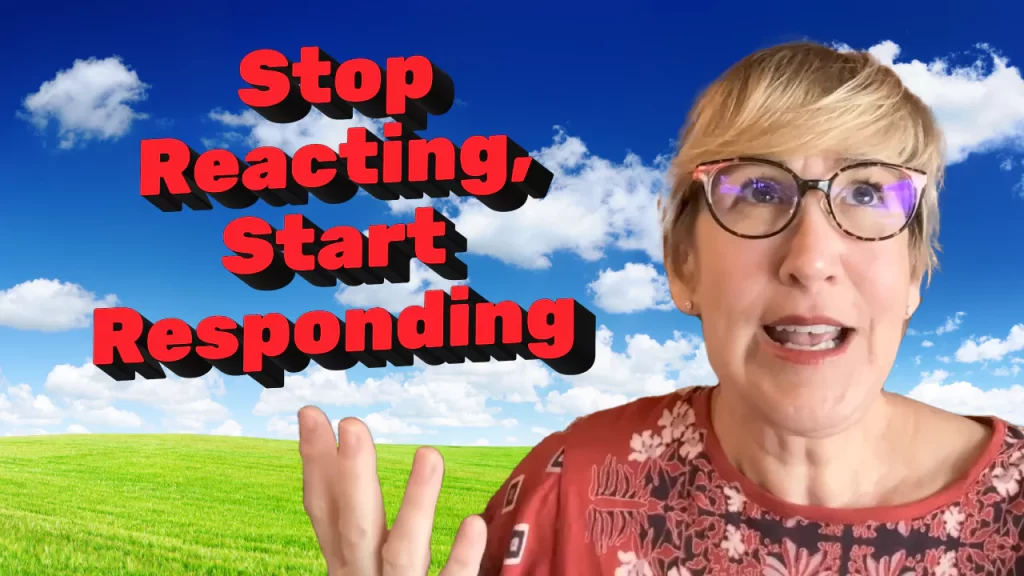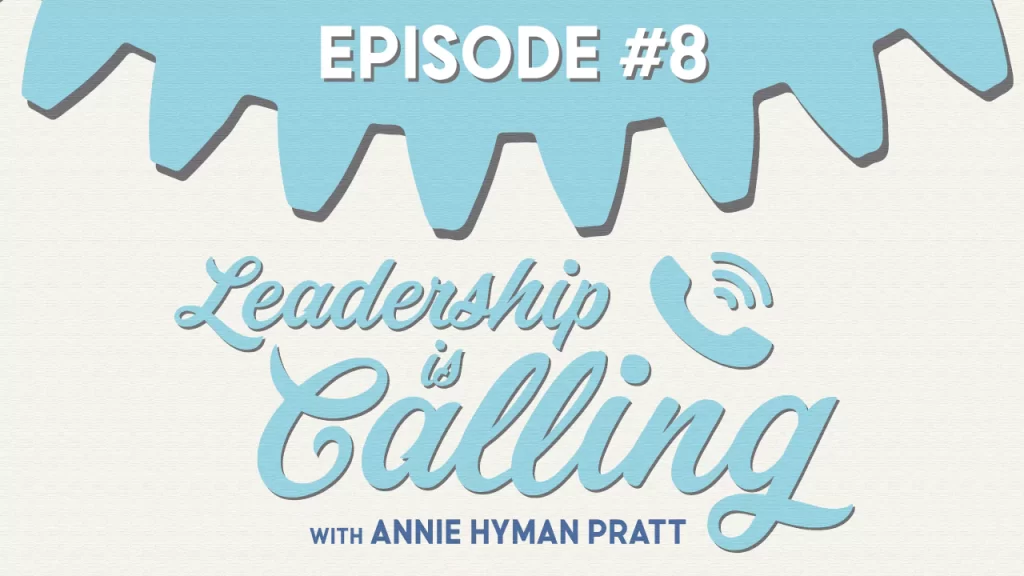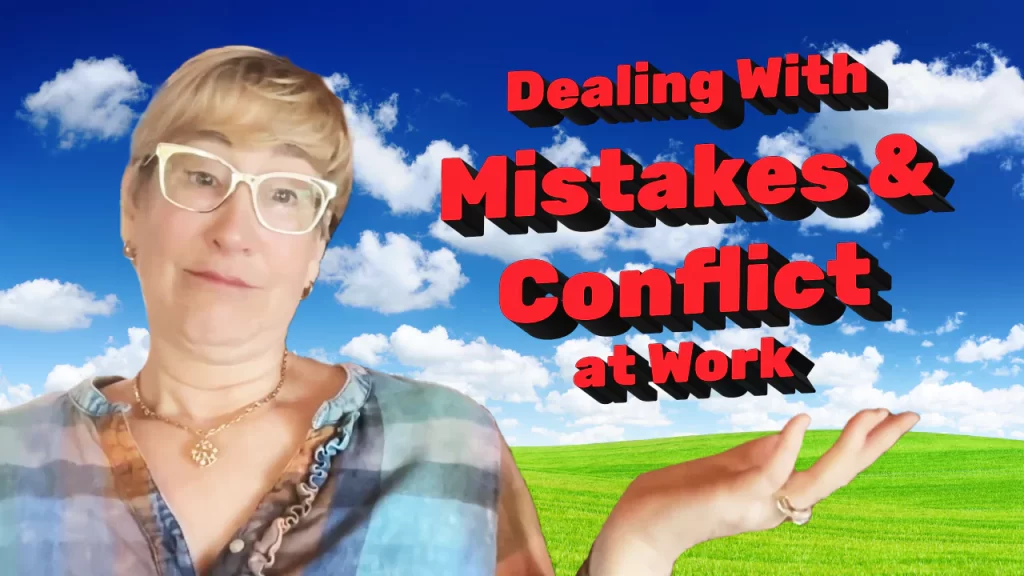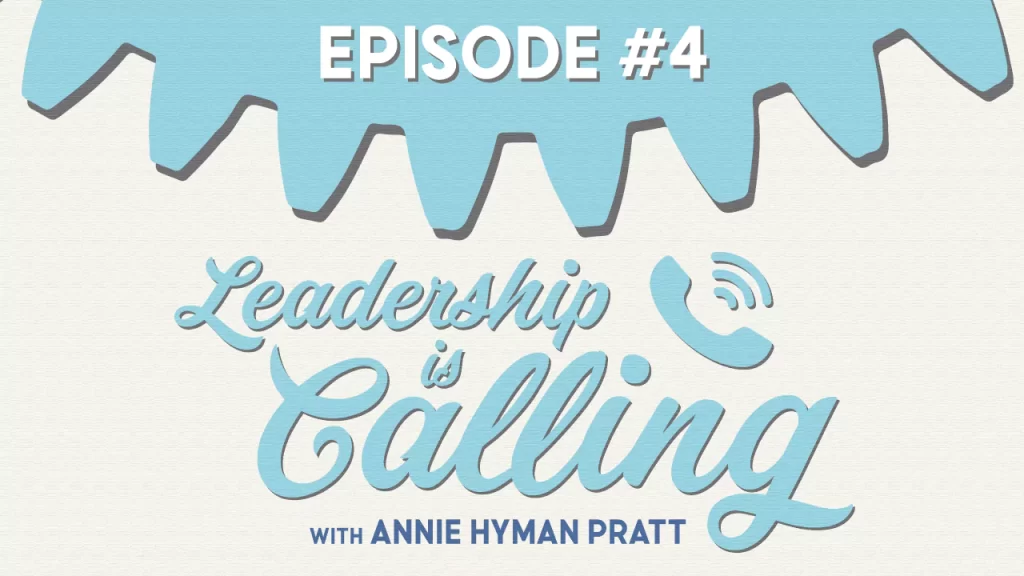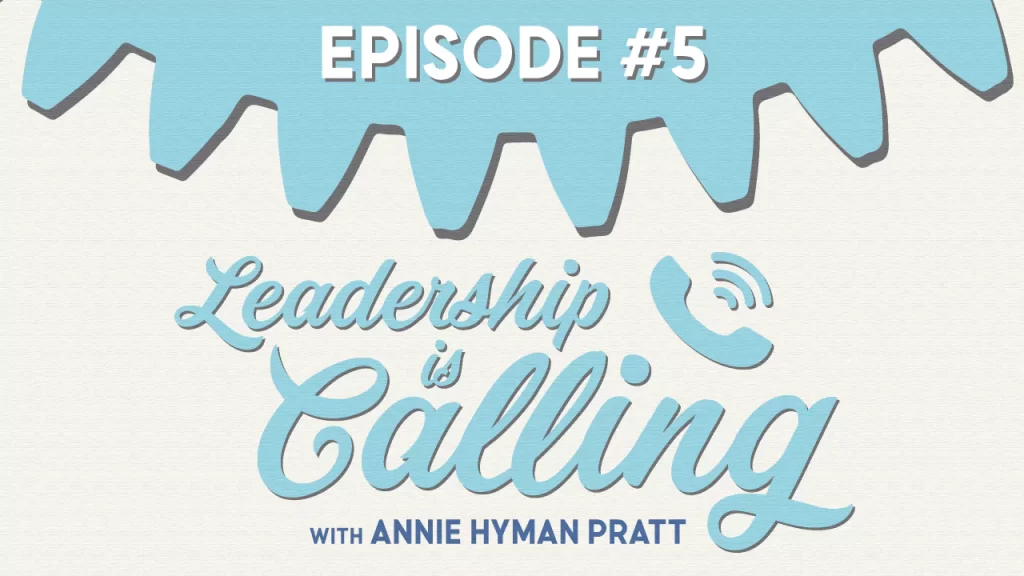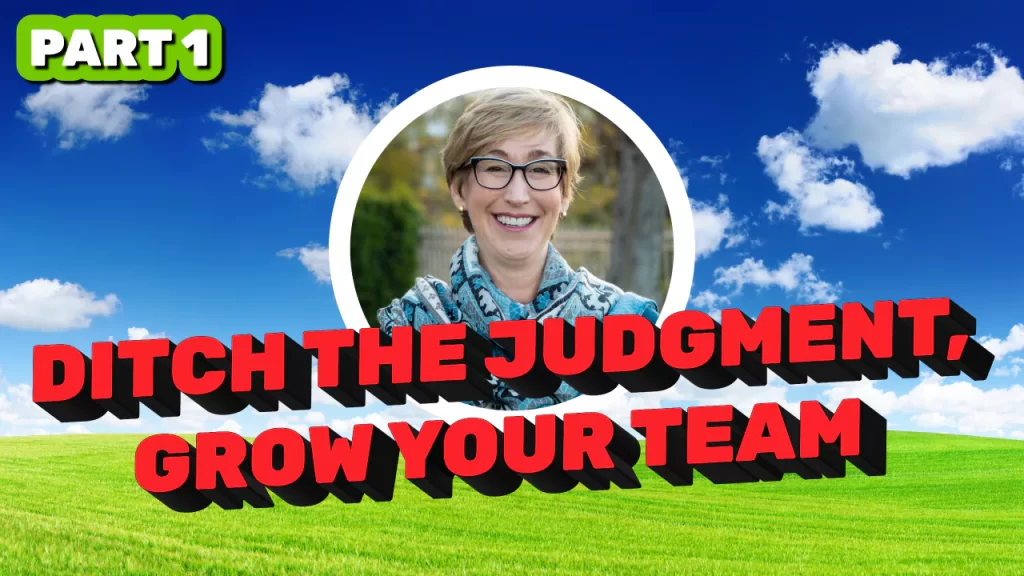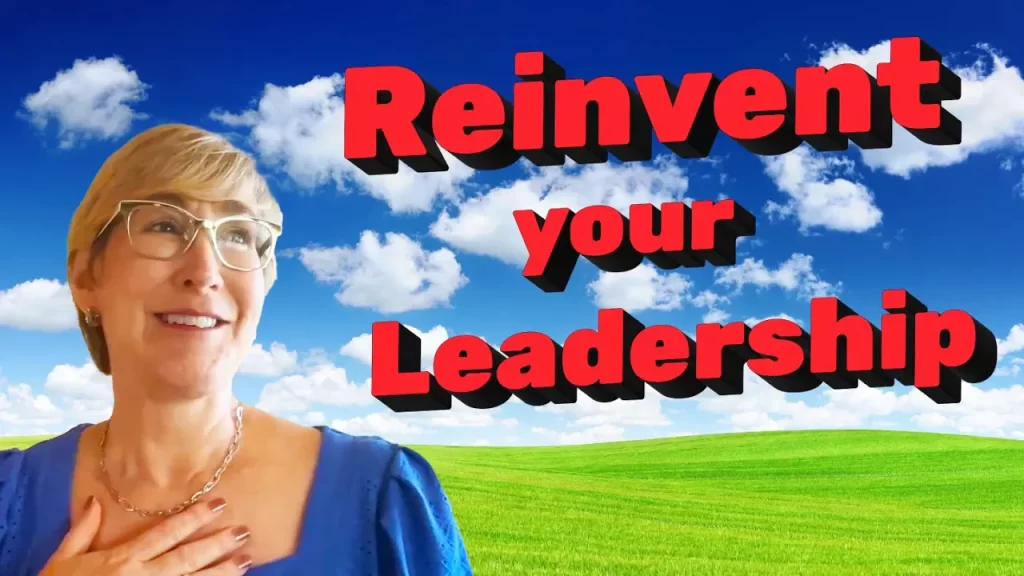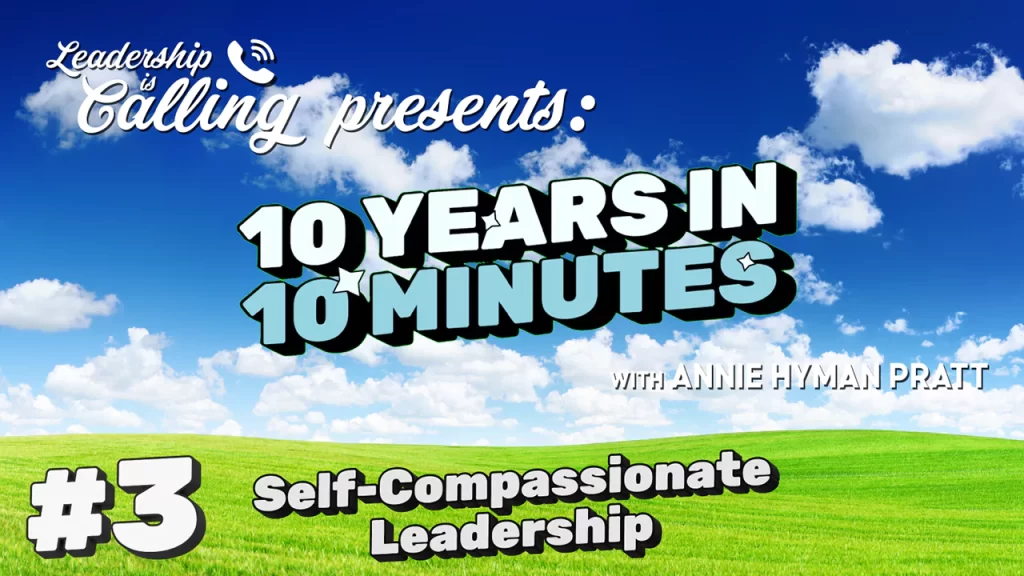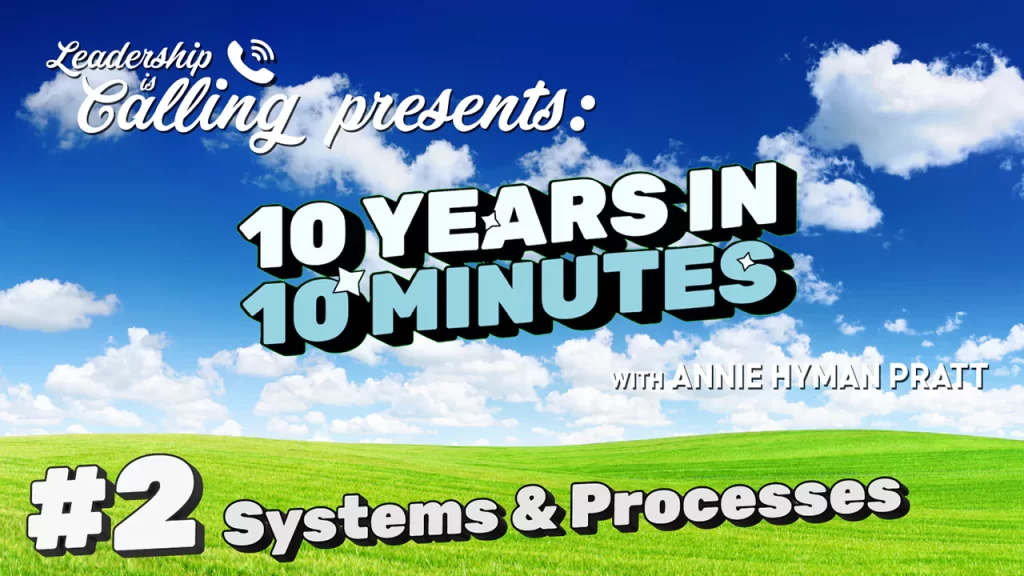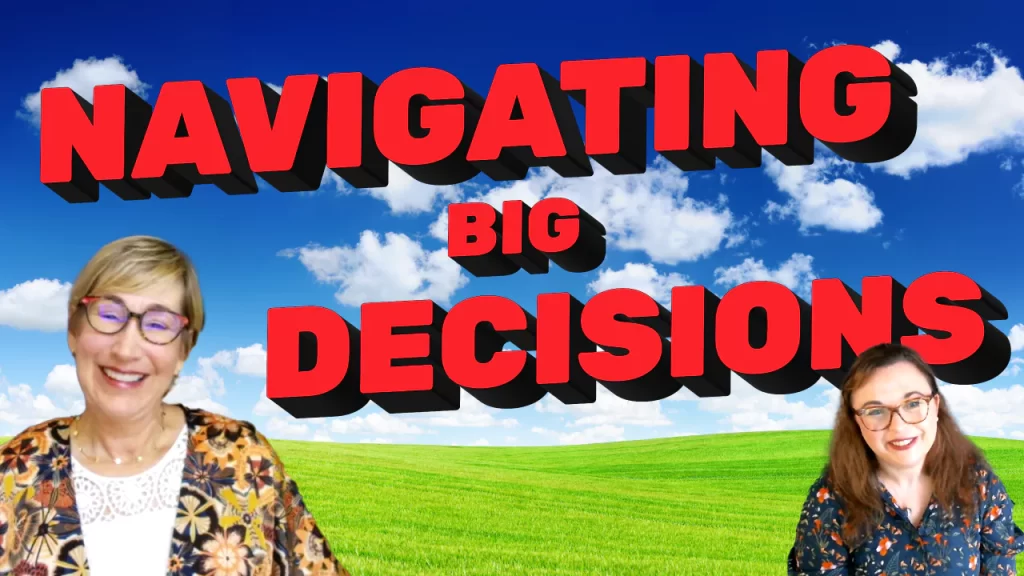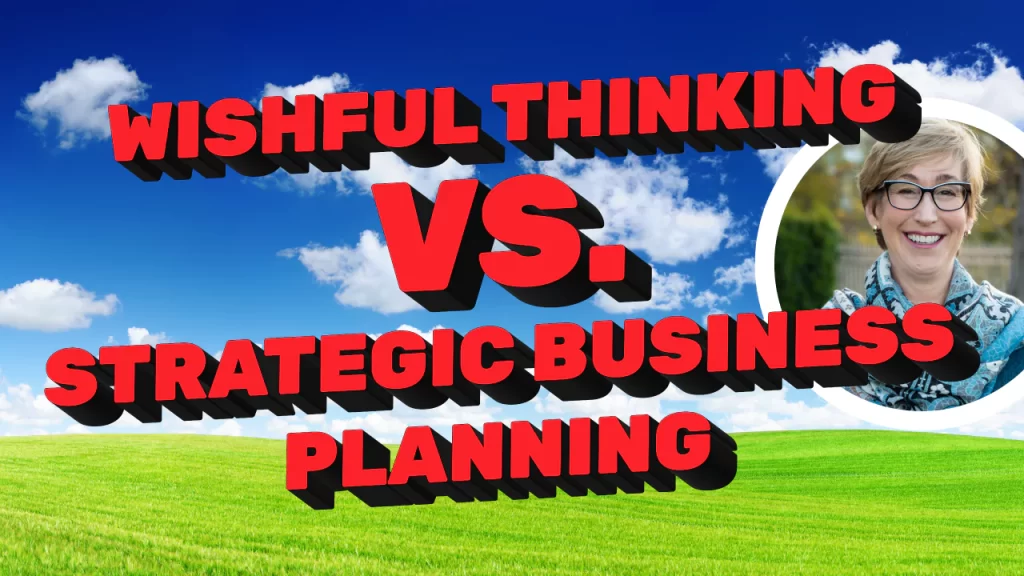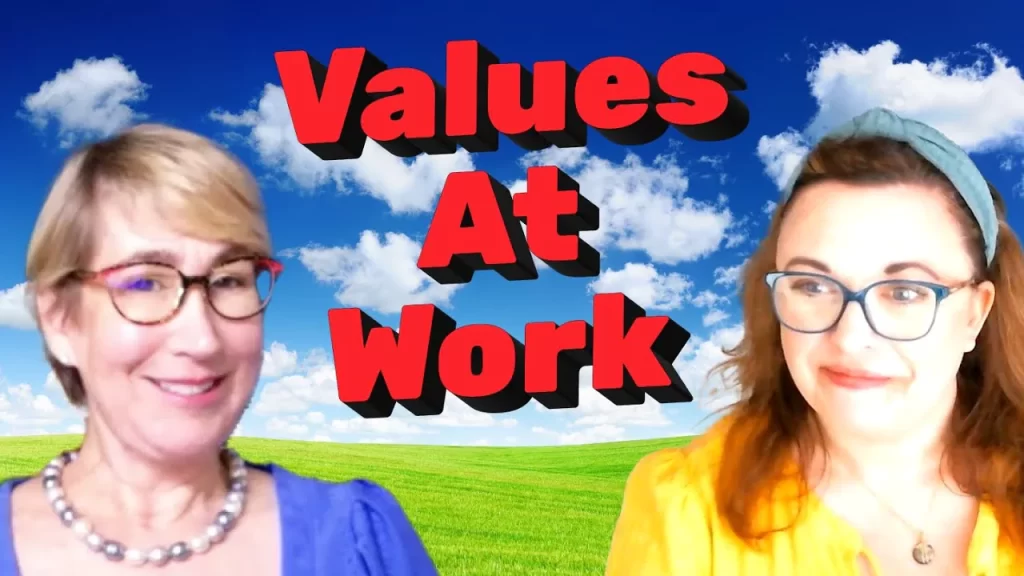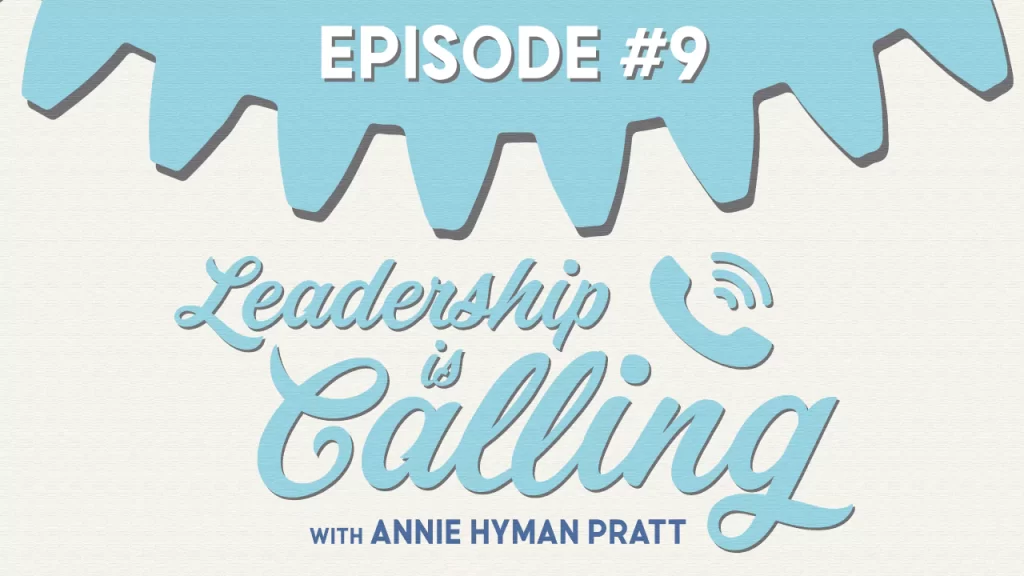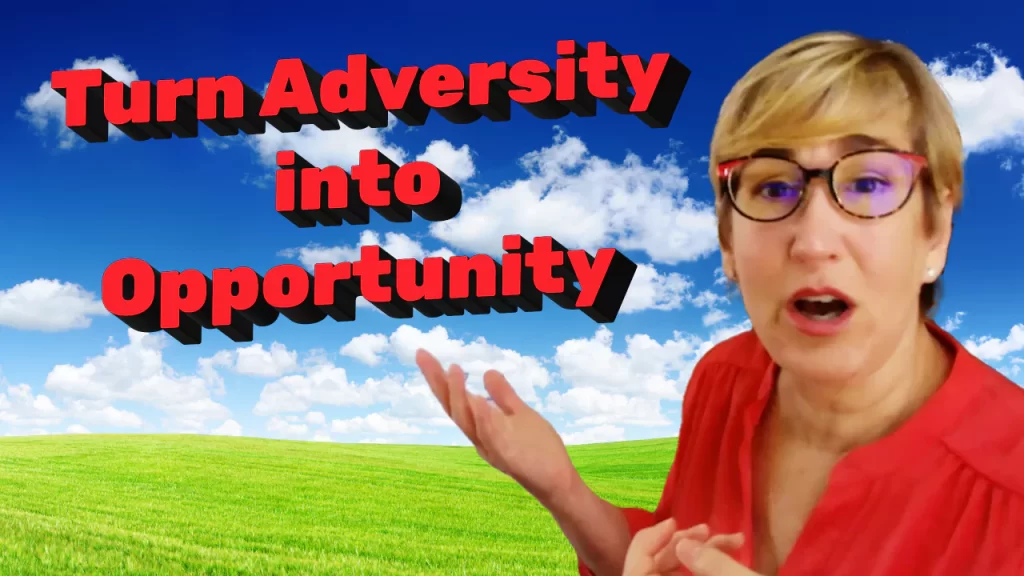Episode #03: Resolve Your Reactivity
Leadership is Calling Episode #3
Annie Hyman Pratt
- Description
- Transcript
Resolve Your Reactivity
“The CCORE Empowerment Process helps move from reactivity to resolve.” -Annie
Get out of self-protection and stop losing access to your best thinking.
Executive consultant Annie Hyman Pratt shares her CCORE Empowerment Process for moving from emotional reactivity to secure, values-based action. Learn to pause, regulate emotions, choose your impact, observe thoughts, release judgment, and engage your secure self.
Tune into this episode to learn how to…
- Pause and regulate so you can resolve any reaction that triggers self-protective behavior
- Start understanding the steps of our CCORE process to help you get back to a neutral place where your best thinking is easily available
- Choose your impact so that you can best resolve a potentially negative situation (don’t make the mistake of continuing to feed your self-protective behavior)
Key Points
- Self-protection is our automatic emotionally reactive response to stress or challenge
- Reactivity causes us to lose access to our best thinking and problem-solving
- The CCORE Empowerment Process helps move from reactivity to resolve
- Pause, regulate emotions first
- Choose your impact – how do you want to show up?
- Release judgment and engage your secure self
Related Resources
Leadership Skills: Self-Leadership
Leadership Development Articles: Leveling Up As You Move Forward | Getting Myself Back into Self-Leadership
Downloadable Leadership Tool: The CCORE Empowerment Process

Auto-Generated Transcript – unedited version
Resolve Your Reactivity
Leadership is Calling is a podcast that brings you leadership and business tips anchored in the people part. I’m Annie Hyman Pratt, CEO and founder of Leading Edge Teams.
Hi everyone, this is Annie Hyman Pratt with the Leadership is Calling podcast. In one of the last episodes we talked about self-protection. We talked about how humans are hardwired to go into self-protection anytime we encounter stress or pressure or challenge or we think we’re being perceived badly. Basically what self-protection is, it’s our hard-wired emotionally reactive response. So it’s, some people call it, you know, fight flight or freeze. It’s basically the reaction that comes automatically before we can think about anything. And once we’re in that self-protective, thoughts and behaviors, those are things like blame, judgment, criticism, [music] denial, defensiveness, resistance, manipulation, overwhelm. There’s so many. And once we’re thinking or talking about, right, behaving in a way that’s emotionally reactive and what kind of one of those places, we lose access to our best thinking.
We, literally, the blood drains from the frontal lobe of our head and that blood goes to our limbs. It literally goes to our big muscles so that we can, you know, run away or we can fight. So, so what we need in business, let me just back up and say even though, though that being hardwired to protect ourselves was absolutely a million percent necessary for us to be the humans that we are today, that hard wiring is not good for how we operate, in especially in business but really in human relationships in modern society. It just doesn’t, it just doesn’t work. It leaves us in a place where we are only concerned with ourselves and, and that just, it takes out of the equation that we are working together to get a result.
So, because it’s so natural and because all of us humans do it, we need a way to get out of that self-protective place and into a place where we’re not only emotionally regulated but we can start to resolve the thing that triggered us into self-protection in the first place. And that’s really what today’s podcast is about.
So, so when you’re in a protective state, so this part is just a tiny bit of review, when you’re in a protective state, self-protective state, you’re, you know, again you’re thinking or saying out loud defensive things or blaming things or, or, you, you know, you’re, you’re retreating and watching a Netflix series, okay. When that stuff is going on, the first thing you’re gonna do is pause, meaning you’re gonna recognize that you are in a self-productive state and you’re going to stop doing whatever you’re doing, whatever you’re doing, and regulate. That could be taking a bunch of deep breaths. If you’re watching TV, that could be getting up and walking around the block, right? If you are banging on the keyboard, that could be, throwing the ball for your dog for a little bit, you know, it’s dancing, you know, dancing is some loud music could really be anything to get your emotions to regulate more.
Once you do that, once you’re in that place, then we can talk about resolving those so that the next time this situation comes up, whatever it is, we have a way better chance of not getting triggered by it into that state again. All right, so, so let’s talk about resolving. We have a process called The Core process. It’s, two C’s: C, C, O, R, E. And this process is an internal process and we think it’s the thing that these steps work the best to get you back into a place where you are much more neutral, where you are back to your good, executive function thinking brain, back to where you can see things really clearly, you can think clearly, you can make good choices, even if they’re difficult choices, right? You can, you can, interact with people really well.
Okay, so this process, I think of it really as an internal process. It’s like a thing that you want to, you’re going to need to practice and you can certainly practice it by, you know, writing things down, journaling, or having a little sheet with the process on it so that you can walk through the steps. But the point of this process is not that you have to walk through the steps forever. The point of the process is to learn it so that you automatically do it when you’re triggered, when you’re, when you’re, you know, when you’re in a place of needing to resolve the thing that triggered you.
Okay, so I’m gonna run through these steps super fast because this is, you know, it’s not, this is a, how would I say this is like a whole chapter in the book. So if you, if you want to go through all the steps of the core process I still recommend to grab the book. All right, but there are a couple steps in there, especially one step that I want to focus on today and that’s the second step. But first let me just tell you all the steps.
We’ve got the big picture. The first step is to clarify the situation. This means that you are going to start by thinking of all the facts, not your emotions, not the stories you’re telling yourself, not kind of what you, you know, what you think might be true. These are like just the facts.
Then the second step, because it’s the second C, is to choose your impact. That’s basically choose how you want to show up, choose how you want to play this. And that’s the step that is just so, so important. We’re going to come back to that in a second.
The third step, the O, is to observe your thoughts and feelings. This is the step that’s kind of the human step, meaning that you can’t turn off your emotions as a human being. That’s like, it’s, you know, I suppose you can temporarily, super temporarily, but it’s really ineffective. It just doesn’t work that way for humans. So we have to be in our thinking brain and able to have thoughts and feelings that don’t control us so we can recognize them but they’re not going to be driving our behavior.
The R stands for release judgment and releasing judgment is helping you get neutral about the situation. We want you to experience compassion when you release the judgment.
And then the last, the E, is to engage your secure self, engage yourself. This is really an automatic step. You don’t, there’s nothing you need to do to achieve this step. It’s like you got to get through the other four and then you’re automatically engaged in your secure self. And this is the place where you are secure. So you no longer have to be thinking about yourself. You don’t have to be thinking about whether I need to guard myself from this other person? Do I need to, you know, make sure nobody’s gonna throw me under the bus here? Do I, am I being perceived badly? I better think about, you know, things with myself instead of getting the outcome. That’s what we don’t want.
We want you to be secure so you’re thinking only about how’s the best way to interact, what are the best things to do to achieve the outcome that we’re going for all together, okay?
So all right, so that’s the core process and I want to come back to the choose your impact step because that step to me is, is one of the most, most powerful things you can do in any situation where you are, you know, have been triggered, are, you know, kind of just getting out of feeling very, self-protective or having very negative emotions going on. And choosing your impact is all about choosing your better self, right? Choosing how you want to show up so that when you look back at this situation you are proud of how you handled it, right? It’s like I want to be handling this situation so that when I look back I’m thinking, you know, that situation was super, stop, super tough, but I did all right. I feel good about the steps I took. I took ones where they were, the things that were important to me in the moment, that for how I wanted to show up. They aren’t the ones that are, you know, my, my, my not great automatic self.
So, okay, so what does that really mean? So, I have a, I think it’s best explained in a couple examples. Okay, so choose my impact. Let’s say that I’m in a situation, in fact I will, I’ll start with one that’s actually kind of common for leaders and, and explain how this part of the process works.
Okay, so leaders, especially leaders that supervise, team members, okay. They often have situations, hopefully not too, too often, but often enough where a team member makes a mistake that’s very costly or they just kind of, you know, mess something up in a way that is hard to recover from. And in those moments it’s hard as a human being not to be reactive, not to get blaming and judging and, you know, not to show up in a place I think of it as like kind of like a huffy, you know, kind of, how would I say it like super critical place of like, often sounds like “what did you do?” or “why did you do that?” or, “or how could you do that?” or “what the heck were you thinking?” or, right? It could be any of those things that kind of implies that the other person is at fault, that they, that they’re, they’re, they’re, they’re better wrong, that like this should not be happening is the, is the, you know, the implied message: “You’re not good enough in this. You haven’t done well enough and this should not be happening.”
Okay, so when you’re a leader and you are behaving in that way, it’s really damaging to the relationship and it doesn’t help the other person either fix the problem or grow from it or, or start to think better from there in the future, right?
Okay, so when you’re a leader, one of the things that you might want to think about your impact is, and it’s like you have to think about it in advance. It’s very hard to have never thought about what I really want here? What’s my greater purpose in this interaction if you’re already upset, okay? So you want to think about it ahead of time. And in this situation, lots of leaders instead choose to hold the intention, choose to want, you know, their desire is to impact the other person in this situation in a place where they help them grow, where they help them deal with the situation in a way where they can most help resolve it from there, where they can gain back trust, right?
And when you think about it as a leader, in the bigger picture, it’s, you know, for most leaders it’s like of course you want that. But I mean I want a team who can really be high performing and a team that’s going to be really high performing is one that’s continuously learning, right? No, no, no team comes in high, you know, perfectly high performing. That’s just not a thing. You’ve got to grow to that. And so mistakes, challenges, really difficult situations are some of the best ways to grow, but only, only if leaders show up in a place that actually holds that space for their team member, even if, even if they’re inside, you know, feeling like “oh my God, I don’t know how this will really go. I’m not sure if we’ll, you know, if, if we’ll come out okay at the very end.”
Okay, however, the thing that we do know, that we forget in the moment, which is why we want to remember how we really want to play this, because what we forget in the moment is if we react badly, this situation will only get worse and will be damaged for the long term. Now you know it’s, it’s hard to remember that. In fact sometimes when our emotions are going so strong, it sort of feels like, well maybe I should get angry so they don’t forget that, that, you know, that they made this big mistake. They will work hard not to do it again. And I, I want to share with you that that, that can work but only in the very, very short term because it really creates a relationship of fear. And once somebody is feeling bad about themselves or fearful of their supervisor’s reaction, they automatically become self-protected. And that’s the last thing that helps, performance, right? That really hurts performance.
So, so we want to be able to show up in a way that we, we have, you know, that even though we’re experiencing emotions of fear and upset and maybe some anger ourselves, we want to hold the second place of “but I have said to myself many times and I know in this moment I’d rather show up in a way that has the chance of being better for this moment and for the long term.” I really want that impact for myself and for my team members. And in that way, then we can show up in a place that instead of sounding like “what the heck did you do?”, okay, that it could sound like, if it’s from my perspective, it might be I might say something like, “Okay, okay, gosh, I see something’s happened here [long pause]. You know, share with me what’s happening a bit so that we can try to figure out, you know, how to resolve this. Tell me, tell me what’s going on so we can work together. I know that you are, you know, have been, I might even say, if it’s me and these are team members that I know, I might even say, “Look, I know this wasn’t intentional so share with me what’s happening here so we can figure it out together.” Okay?
And that is the way I want to show up. That, that is the kind of thing of like even in a terrible situation when I can take that away from the situation, it makes a huge difference for not only how it turns out but for my own confidence level because it’s like I had enough inner strength to show up in a way and not let my emotions take over. That’s hard as a human. That’s something to be very proud of. And it works.
So let me give another example, from a CEO, a CEO mentee, right? Somebody, the CEO that I mentor, has been doing so for quite a long time. And, this person is quite a big deal. I’ll just stay in his home country. It’s not in the U.S. He’s in South America, okay? But, he is an amazing entrepreneur. And, he often takes, how would I say, Q & A calls and, Q&As sessions where anybody can call in and ask him questions. They don’t have to already be a student. they don’t have to be in his programs. They can just ask questions, which is, which is great. All right, so, so one day he’s doing a, one of these sessions and a caller calls in and is asking something about the program, his digital program, and it comes out, it comes out that he’s, this gentleman has pirated the program, meaning that he has a, a copy that he didn’t pay for, like kind of a, you know, a, an illegal copy. We’ll just say it that way, okay?
So that is something that makes a lot of entrepreneurs very, very upset because, you know, kind of like a musician would be upset or a playwright would be upset. It’s like this is how they do business. This is the only way they can provide all the teaching, all of the value to their students is if people actually follow the rules and pay for it. All right, so, so, so when this comes out, this leader was so good because in the past he could have become pretty snarky, a bit aggressive or like, you know, might have said something like, “Dude, that is so uncool. How dare you steal my program?” or, you know, something like that. She could have come out with something like that and he would have been justified.
And in fact lots of people on the call, I think we’re thinking that, right? There’s like a whole audience listening to this exchange and I’m sure they were thinking “Oh my gosh, I wonder what the leader is going to do now.” So, so but instead of handling it that way, he said “First I’m gonna answer your question and then I have a, a second thing that I want to share.”
So first he did answer the question that came up about, the, you know, something about the program, something specific. And, and he answered the question because he knew everybody on the call too would benefit from this information. Okay, great.
And then he said “The thing I want to share with you is that, I understand, you know, I, I think what you were saying is, how you got the program, that you didn’t pay for it. And I want to share with you the impact of that, that, you know, that for us that are doing our best to provide really, really great value that need to pay for all kinds of expenses to even do this call for hours for, you know, for our students, for our audience, etc., we need people to not be, you know, copying the program. So I would really appreciate it if you’re finding value in this program to, you know, buy the, the real one, you know, buy the official one and become a, you know, a legitimate, student of ours. That would be great.” And he left it there.
Okay, and then what happened is he got a ton of messages from his people on the call saying “Oh my gosh, dude, I can’t believe you were able to do that. I admire you so much. I, oh my gosh, you had so much emotional control. I would never be able to have shown up that way,” right?
He got a tremendous amount of respect from his students, from his whole audience, because he handled it in a way that didn’t draw, you know, didn’t, it didn’t make the other person a bad person. He was able to not get reactive and instead share with this person what’s the impact, what does this, you know, what is, what does this mean, and to make a request and to say “Hey, I’d appreciate if you would, you know, if you’re finding value, if you become illegitimate, owner of this program.”
So how you show up, it matters so, so, so much. And over time, when you’re able to show up better and better to have the impact you want to have, and in this case, one of the, the biggest impacts that this leader was holding right inside himself, one of his main intentions is “I want to, you know, make as many people successful entrepreneurs as possible.” Like that’s his overarching intention: “I want entrepreneurs to not only be entrepreneurs but to be successful ones.” And for him to communicate, for him to show up in a way that all of his students in his community could learn that he demonstrated how to handle a rough situation in a way that was, you know, pretty darn positive for such a difficult situation, had a great outcome, a great outcome.
In fact, more impactful, the way he handled that situation was more impactful than the question he answered. I don’t even remember what the question was, right? But the way he handled it generated, I think people got more learning, more value from the way he showed up, more admiration, more respect than anything else.
So, oh my gosh, is it worth it to, you know, in situations that are difficult where you might get triggered, to learn how to first, you know, recognize that you’re, you’re about to, you know, you recognize that you are in or about to be in a very emotionally reactive state. You know, pause and regulate. And then show up, right? Use the core process, especially this second C step of choosing your impact. Show up in the way that you really want to play this. You’re, you’re, you know, the bigger you want to play this, the you want to look back and go “Hey man, I did all right. That worked out.”
So that’s, I think that’s, what you know, kind of the big thing I wanted to share with you today on this podcast. And, I will share more of the core process in other podcasts upcoming. So, please, you know, please come back, and listen.
Be sure to like, comment and subscribe to Leadership is Calling to learn more about this episode’s topic.
Pick up a copy of my book The People Part.
Want to learn more about how to uplevel your leadership skills and create a collaborative team that helps you drive results? Go to LeadingEdgeTeams.com/schedule to learn more about working with us and to schedule a call.

